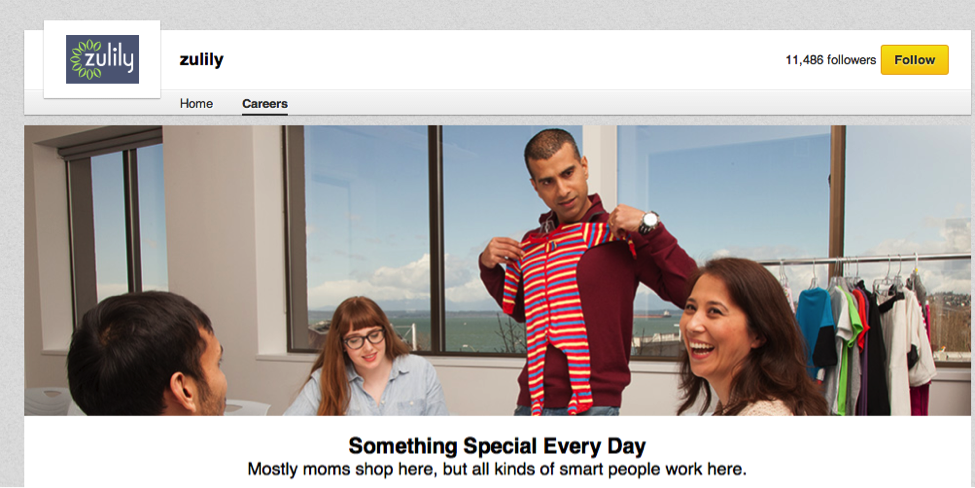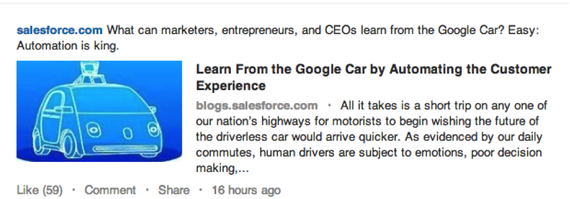A LinkedIn company page is an integral component of any successful brand strategy in 2014. Not only will a LinkedIn page for your brand allow you to reach new audiences, find the best new talent, and share relevant content, but the platform makes all of this fairly easy and painless.
With over 200 million members worldwide, LinkedIn trounces Facebook and Twitter when it comes to communicating with professionals where they live. Consider for a moment the fact that:

While Facebook may be the leading social media platform for connecting with consumers, don’t forget that the
200 million professionals on LinkedIn are also consumers. Herein lies one important difference between the strategy that works for social media platforms like Facebook and Twitter, and what works for LinkedIn: your
LinkedIn strategy should be more B2B than B2C.
Below we take a look at 8 easy steps to ensure you are making the most of your brand’s LinkedIn presence.
1. Engage Audiences with a Compelling Cover Image:
Your cover photo is your viewer’s first impression. As such, it should be both visually engaging and should speak to what your brand is and does.
Your cover image (also known as a
2. Add a Careers Section:
Remember, LinkedIn is primarily a meeting place for professionals. Including a Career page as a component of your company’s LinkedIn page ensures that your brand’s presence on LinkedIn feels organic, not forced.
Zulily’s Careers page is open and inviting. It says a little bit about the brand, but mostly focuses on the work culture: 
Be sure to link your Careers page with your Company page, don’t keep them separate. Notice how Zulily’s Home and Career pages display next to each other from the main company page:

3. Make Your Company Page Accessible:
LinkedIn makes it very easy for you to make it very easy for people to follow your brand with the “Follow Company” button.
This button allows people who are already engaging with your content via other venues to follow you. Add it to your main company website, microsites, blog, or online portfolios.
4. Beef Up Your “About” Section:
Many brands make the mistake of simply cutting and pasting the “About Us” section of their main company website into the “About” section on their LinkedIn company page. This is the wrong approach because your audience on LinkedIn is primarily B2B rather than B2C. Instead of telling your customers what you are all about, here, tell colleagues and interested industry members about the role you play in the field. HarperCollins follows this rule:  Your “About” blurb could explain:
Your “About” blurb could explain:
- Your company’s size and culture
- Who you seek to recruit
- What your brand offers
- The community and/or industry
- Goals for the brand in the next few years
While your “About” section is important, it shouldn’t be too long. Think of it as a teaser.
5. Create and Share Quality Content:
Company Status updates (a relatively new feature) allow brands to send updates on new products and services, new hires, company shake-ups, and breaking news to followers.
Use an update to send out a popular blog post, or a link to an affiliated organization or charity event. Think of status updates as analogous to Facebook business page updates.
Let’s look at a few examples of brands who excel at sharing content on LinkedIn: Salesforce updates on LinkedIn connect followers with content from the Salesforce blog. The post below promises to give something to readers — in this case, knowledge about the customer experience.

Spotify also posts relevant, useful content to followers. In this case, it is a job posting.

From the two examples above, you can see that posting solid content to LinkedIn doesn’t mean you need to create new content just for LinkedIn in order for your posts to be successful. This is good news for busy business owners and brand managers.
6. Develop a Company Showcase Page:
A Showcase Page is an extension of your main company page. Think of it almost as a microsite for LinkedIn. It’s designed to be a specialized page for your most popular products or services.
For example, Microsoft has a showcase page for Office, for Lync, for Dynamic, and many more specialized products. These pages link directly from the parent page for easy access: 
A Showcase Page allows you to:
- Provide targeted content to a targeted audience. A higher level of personalization means that followers engage more closely with the material in front of them.
- Develop long-term relationships with followers.
- Explore topics in-depth that might not be of interest to general followers of your pages.

The Showcase Page for Visio is thorough and in-depth — and tailored exclusively to people who use and care about Visio.
The Takeaway
Once you begin this process of revamping your company page, you may be surprised at how quickly you see positive changes. There are huge advantages to be reaped from making your presence known on LinkedIn.
With so much on the line and so little to lose, what’s stopping you from taking that next step?



